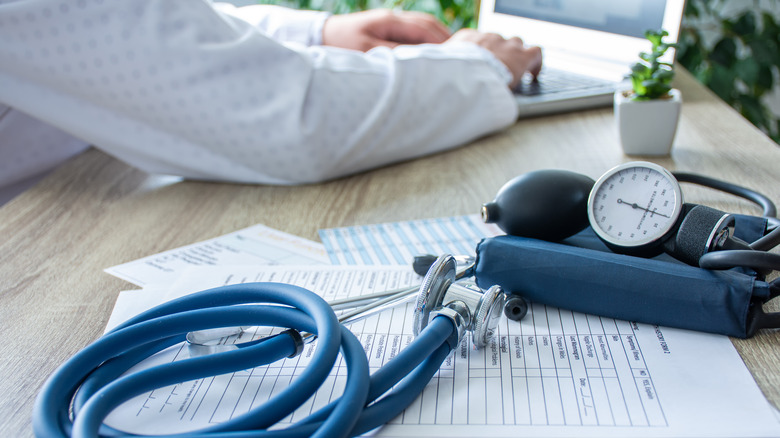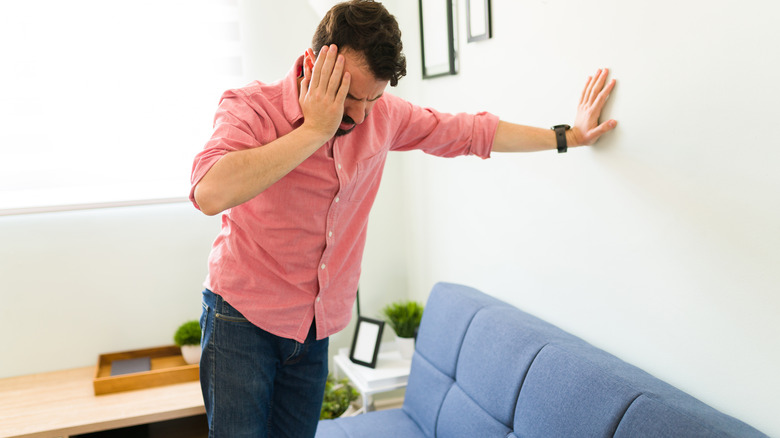What Does It Feel Like When You Have High Blood Pressure?
Blood pressure occurs when your heart beats to pump blood throughout your body, putting force, or pressure, against blood vessels. Blood pressure readings include a systolic and a diastolic number. A normal reading is anything under 140/90 (via National Center for Biotechnology Information (NCBI)). Anything over 140/90 is considered high blood pressure.
It's important to have your blood pressure checked because high blood pressure, or hypertension, can lead to heart disease, stroke, and kidney failure. Around 116 million adults in the United States have high blood pressure. That's roughly 47% of the adult population, and of those, only one in four of them have their hypertension under control, according to the Centers for Disease Control and Prevention.
High blood pressure is dangerous because it doesn't have what experts would consider specific symptoms, hence the reason why the disease has been dubbed the "silent killer," per the American Heart Association (AHA). That said, there are some signs worth noting.
Symptoms associated with high blood pressure
While high blood pressure doesn't have any definitive symptoms, WebMD reports that there are some signs that could be associated with it. These include an irregular heartbeat, severe headaches, fatigue, confusion, vision problems, chest pain, and difficulty breathing. Facial flushing might also occur with high blood pressure, but it can be a symptom of other conditions, too. Dizziness, sweating, blood spots in the eyes, and nervousness might be indicators of high blood pressure, but not always. Nosebleeds can occur if blood pressure is dangerously high, which is usually a reading of 180/120 or higher.
It's important to have your blood pressure checked regularly because you can have high blood pressure and not have any symptoms at all. Your healthcare practitioner can check it, or you can check it at home with one of many monitors on the market. Always discuss any symptoms of concern with your doctor.


